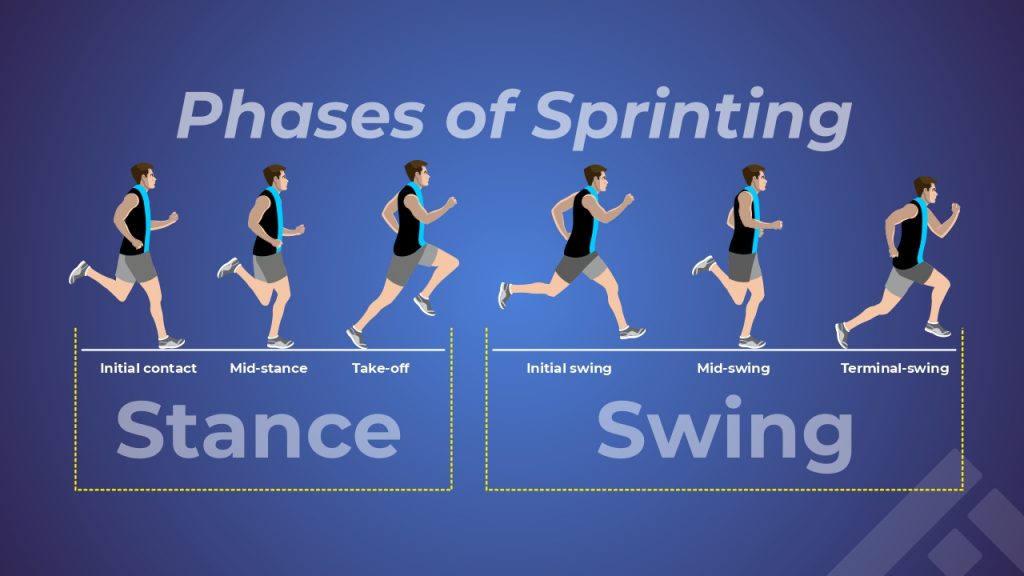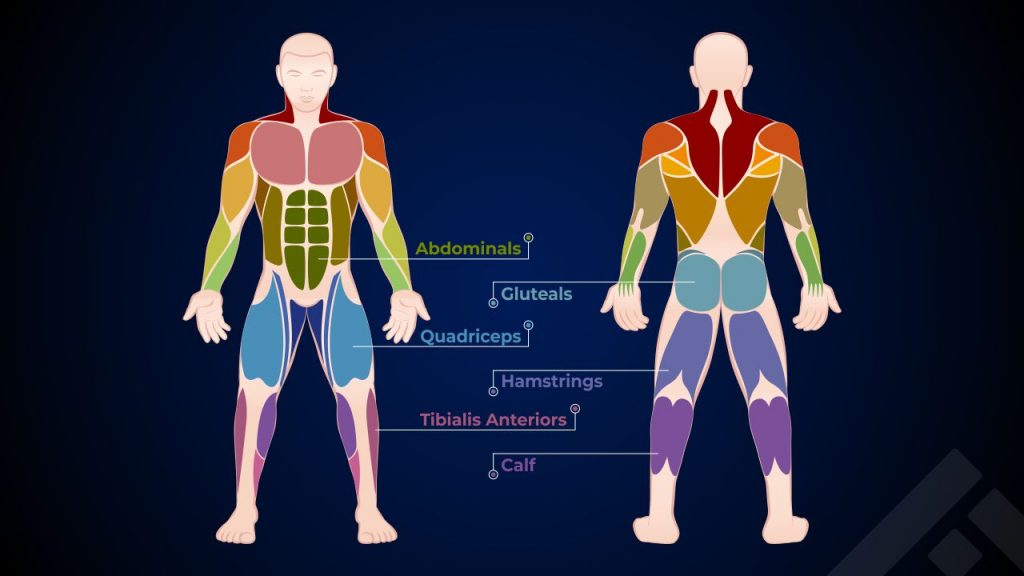
Which Muscle Groups Are Used in Running?

Human anatomy is designed to enable us to walk and run. It comes to us naturally. A group of bones and muscles of the musculoskeletal system work together to make you run swiftly and efficiently. So, never think you can’t run.
Which physical features help us run?
1. The human skull is designed for heat exchange and prevents the body from overheating during running.
2. The human body is tall — with a narrow trunk, waist, and pelvis — that increases the skin surface, causing greater cooling through sweating during a run. It also helps in greater rotation of the trunk.
3. Human buttocks, developed into a large muscle mass, are critical for stabilization in running because they connect the thigh bone to the trunk. During running, because you lean forward at the hip, your buttocks keep you from pitching over on your nose every time your foot hits the ground.
4. Long legs — aided by ligaments and tendons, including the long Achilles tendon located at the back of our lower leg — allow humans to take large strides when running. The Achilles tendon is the thickest and most powerful tendon in the body and acts as a spring that stores and releases energy during running.
5. The arrangement of bones in the human foot creates a stable or stiff arch that makes it more rigid. This helps the athlete push off the ground more efficiently and utilize ligaments on the bottom of the feet as springs.

Running gait cycle
Running is the result of a well-organised coordination between the muscles, heart and other parts of your body. The continuous and repetitive pattern of running is called the running gait cycle, which has two phases — stance and swing.

Stance phase
This is the first phase of running and begins when your heel touches the ground and ends with a push-off. The initial contact with the heel or midfoot, transitions into the foot rotating inward. This allows for cushioning the impact on landing. The body weight now shifts to the front of the foot. The foot now starts preparing for “toe-off” by contracting (shortening) and tightening the calf muscles and the Achilles tendon.
Swing phase
In the swing phase, both feet are not in contact with the ground. During this phase, the legs cycle through, ready for the next foot to strike the ground. The swing phase ends at the heel contact, and a new gait cycle begins.
Also read: Can Strength Training Make You Run Faster?
Muscle groups involved in running
The seven muscle groups involved in running are:
- Quads
- Hamstrings
- Gluteals
- Hip flexors or tensor fasciae latae (TFL)
- Abdominals
- Calves
- Anterior tibialis

1. Quadriceps at work
When you move your leg forward, you mainly use the quadriceps muscle in the front portion of your thigh. They bend your hip and straighten your knee. These muscles, commonly called quads, stabilize the knee and help absorb the shock of impact as you land.
2. Back to your hamstrings
Now, as your body moves forward while running, the action switches to your hamstrings. These muscles are at the back of your thigh and straighten your hip and bend your knee. They also work to help you lift your knee behind you.
3.Don’t ignore the glutes
The gluteal muscles form your buttocks. They help to extend the hip, straightening it beneath you. They stabilize your trunk and keep you upright. Strong glutes are important for good running form and alignment. Runners often neglect the glutes in workouts because they lie deeper than hamstrings and quads. That’s a mistake, train them equally.
4. Flex the hip
Hip flexors and extenders, along with the quads and hamstrings, help the legs move forward and back. The hip rotator muscles stabilize the hip joint and contribute to a good running form.
5.A hard core
The abdominal muscles form your core. For the harmonious functioning of all your muscles, build a strong core. But a strong core doesn’t happen overnight. It requires a lot of time to train the abdominal muscles.
The major abdominal muscle groups involved in running are the rectus abdominis and the intercostals. Rectus abdominis is a group of muscles on the sides of your abs. These muscles run along the center of your abdomen. The intercostals are present between the ribs and greatly used during the heavy exhalation and inhalation while running. The muscles of the abdomen connect your upper body to the lower, and help you keep an erect posture. They have a marked effect on your gait.
6. The work of calves
The muscles of your lower leg are called the soleus (inner calf) and gastrocnemius (outer calf). Together called the calves, they extend and flex each foot as you land and push off. These muscles also help absorb shock and give your stride spring.
7. The tibialis anterior
When you move your toe up, the anterior muscles called tibialis anterior (which run down the front of the shins) are activated. Work these muscles and strengthen them to improve your form and performance.
References
1. Kelly J. How Leg Workouts for Runners Work. How Stuff Works. https://adventure.howstuffworks.com/outdoor-activities/running/training/leg-workouts-for-runners1.htm (accessed Feb 18, 2021).
2. Dunne J. Five Key Muscle Groups For Stronger Running. Kinetic Revolution. https://www.kinetic-revolution.com/key-muscle-groups-for-stronger-running/#:~:text=Important Running Muscle Groups,muscles of the core region (accessed Feb 18, 2021).
3. Alan. The Muscular system and Running. Run Trails. https://runtrails.org/muscular-system-and-running#:~:text=Some of the muscles that,greatly in improving your performance (accessed Feb 18, 2021).
4. Tendon anatomy. Britannica. https://www.britannica.com/science/tendon (accessed Feb 18, 2021).














